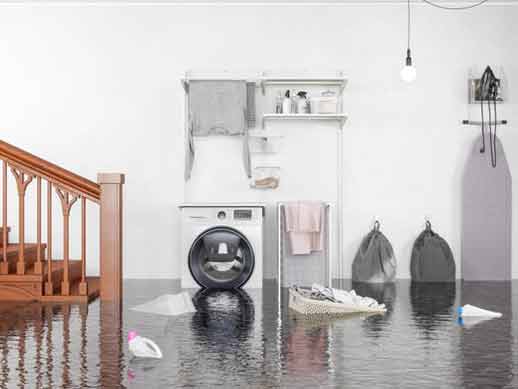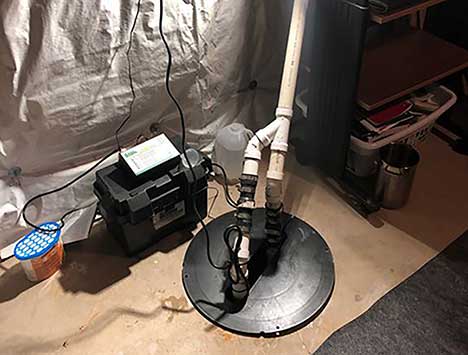Understanding the Causes of Basement Flooding: What You Need to Know
Before we get into the essential tips for keeping your basement dry and flood-free, it’s vital to grasp the common causes of basement flooding. Knowing the root of the problem can help prevent future water damage and maintain a safe, dry home environment. Several factors contribute to basement flooding, including heavy rainfall, rapid snowmelt, plumbing leaks, and poor drainage. Additionally, foundation cracks and insufficient waterproofing can exacerbate the issue, allowing water to seep through walls and floors.
Inspect and Maintain Your Gutters and Downspouts
The first line of defense against basement flooding is a well-maintained gutter and downspout system. Gutters and downspouts are essential in directing water away from your home’s foundation, preventing water accumulation and reducing the risk of basement flooding. Regularly inspect your gutters and downspouts for clogs, damage, or improper alignment. Clean them at least twice a year, especially during the fall and spring, to ensure they are clear of leaves, debris, and dirt.
Ensure that downspouts extend at least six feet away from your foundation. This keeps water from pooling near the foundation and instead directs it far enough away to mitigate potential flooding. Additionally, consider installing gutter guards to minimize debris accumulation and reduce the frequency of gutter cleaning.
Seal Cracks and Apply Waterproofing Solutions
Small cracks in your basement walls and floors may seem insignificant, but they can allow water to seep in during heavy rainfall or rapid snowmelt. Conduct regular inspections to identify any cracks or gaps in your foundation. Use a high quality sealant to fill in small cracks and apply waterproof coatings to prevent water ingress. For larger cracks or structural concerns, call a professional to ensure proper repairs and prevent further damage.
Additionally, waterproofing solutions such as interior and exterior sealants, vapor barriers, and waterproof paints can offer extra protection against moisture. Depending on the severity of your basement’s water issues, you may opt for professional grade waterproofing services to ensure a comprehensive solution.
Maintain Proper Grading and Landscaping
Your home’s grading and landscaping play a significant role in preventing basement flooding. Proper grading ensures that water flows away from your foundation rather than toward it. Evaluate the slope of your lawn and surrounding areas to ensure there is a gentle grade away from your home. If necessary, contact a professional to regrade the ground or install a French drain system that redirects water away from your foundation.
Additionally, consider planting native plants and trees that can help absorb excess water and reduce soil erosion. Avoid planting large trees with invasive root systems near your foundation, as their roots can penetrate and damage your home’s structure. Utilize mulch and gravel around your foundation to improve soil stability and facilitate proper drainage.
Install a Sump Pump and Backup System
A sump pump is a crucial component in preventing basement flooding, especially in areas prone to heavy rainfall or high water tables. Install a high-quality sump pump in your basement’s lowest point to effectively capture and remove excess water. Ensure the pump is regularly maintained and tested to confirm it’s in proper working condition.
In addition to the primary pump, consider installing a sump pump battery backup system or a water-powered backup pump. These backup systems provide an extra layer of protection in case of power outages or primary pump failures. Regularly inspect and maintain your sump pump and backup systems to ensure they are functional and ready to handle any water ingress.

Regularly inspect and maintain your sump pump and backup systems to ensure they are functional and ready to handle any water ingress.
Ensure Proper Plumbing and Leak Detection
Plumbing leaks and issues can contribute significantly to basement flooding. Regularly inspect your plumbing system for any signs of leaks, corrosion, or damage. Pay close attention to pipes, water heaters, and appliances that may be prone to leaks or malfunctions. Installing leak detectors and automatic shut-off valves can help detect and address potential issues before they become major problems.
In cases of significant plumbing problems, such as burst pipes or persistent leaks, contact a licensed plumber to perform necessary repairs and maintenance. Ensuring a well-maintained plumbing system can significantly reduce the risk of water damage and basement flooding.
Invest in a Comprehensive Basement Waterproofing System
For homes with a history of basement flooding, investing in a comprehensive basement waterproofing system may be necessary. Such systems often include a combination of interior and exterior waterproofing solutions designed to provide maximum protection against water ingress. Exterior waterproofing typically involves installing a drainage system around the foundation, applying waterproof membranes, and addressing any foundation cracks or damage.
Interior waterproofing may include installing a sump pump, interior drainage systems, and applying waterproof coatings to walls and floors. Consult with a professional waterproofing contractor to assess your basement’s specific needs and develop a tailored solution that ensures long-term protection against flooding.
Install Window Well Covers
If your basement has windows with window wells, it’s essential to protect them from water intrusion. Installing window well covers can prevent rainwater, snow, and debris from accumulating in the window wells and seeping into your basement. Choose durable, clear covers that allow natural light to enter while keeping water and debris out.
Regularly inspect and clean the window wells to ensure they remain free of leaves, dirt, and other obstructions. Proper maintenance of window wells and covers can significantly reduce the risk of water entering your basement through these vulnerable points.
Monitor and Address Humidity Levels
Excess humidity in your basement can contribute to mold growth, dampness, and water damage. Use a dehumidifier to maintain optimal humidity levels and reduce moisture buildup. Aim for a humidity level of around 30-50% to create a dry, comfortable environment. Regularly check and empty the dehumidifier’s reservoir or connect it to a drainage system for continuous operation.
Additionally, ensure proper ventilation in your basement by opening windows and using exhaust fans to improve air circulation. Address any sources of excess moisture, such as leaks or seepage, to prevent humidity levels from rising and causing water-related issues.
Conduct Regular Inspections and Maintenance
Prevention is key to keeping your basement dry and flood-free. Conduct regular inspections and maintenance of all the components and systems that protect your home from water damage. This includes checking your gutters, downspouts, sump pump, plumbing, and waterproofing solutions. Stay vigilant for any signs of water intrusion, such as dampness, mold, or musty odors, and address them promptly.
Establish a maintenance schedule to ensure that all preventive measures are consistently implemented and functioning correctly. By staying proactive and attentive, you can minimize the risk of basement flooding and maintain a safe, dry living environment for you and your family.
Keeping your basement dry and flood-free requires a combination of preventive measures, regular maintenance, and prompt attention to potential issues. By following these essential tips, you can protect your home from water damage and create a safer, more comfortable living space. Invest in proper waterproofing, maintain a well functioning drainage system, and stay vigilant for signs of water intrusion to ensure long term protection against basement flooding.



